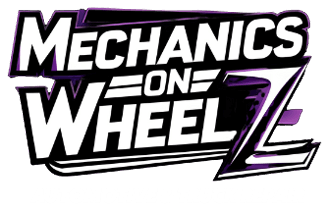Once you have decided which spark plugs you want to use, it is important to take the time to make sure that they fit your engine. Spark plug size and spark gap are two of the main considerations when selecting spark plugs for your vehicle. The spark plug size must match the cylinder bore diameter of your engine, or else it won’t create a proper spark. Additionally, spark gap should be set according to your engine manufacturer’s specifications. Choosing spark plugs that don’t meet these criteria can lead to misfires and other performance issues.
Once you’ve determined what type of spark plug is best for your vehicle, it is also important to consider material selection, as some spark plug materials are better suited for certain applications than others. Spark plugs made of copper, for instance, are the most common and offer good performance in a variety of conditions. However, spark plugs made from iridium or platinum may be better suited for higher-performance applications where spark plug longevity is important.
Make sure to keep your spark plug installation clean and free from contaminants like oil, dirt, and grime. This will ensure that spark plugs perform optimally without any potential misfires or reductions in performance. Following these guidelines can help make the spark plug selection process easier, so you can get the right spark plugs for your vehicle and keep it running reliably.
Finally, spark plug maintenance is important to ensure that your spark plugs continue to perform optimally. Regularly inspect spark plugs for signs of wear or damage and replace spark plugs as needed. It is also a good idea to keep spare spark plugs on hand if they need to be replaced unexpectedly. This can help you avoid any potential issues arising from spark plug malfunction. By following these steps, you can ensure your spark plugs continue to run reliably for years.
Temperature
If a little is good, then more is better… right? Well, like most aspects of performance, this isn’t always the case. When it comes to spark plugs, it’s easy to think that a hotter spark is always better, since the primary goal of a plug is to ignite the fuel at just the right moment, creating the combustion needed to generate the most power. But, to achieve the best ignition, the temperature of the plug must meet the demands of the application.
“If the tip of the spark plug is too hot, it can cause pre-ignition leading to detonation/knocking, and damage may occur. If it is too cold, electrically conductive deposits may form on the insulator, causing a loss of spark energy or the actual shorting-out of the spark current,” explains The Green Spark Plug Co., the only company in the world that specializes in spark plugs and accessories for veteran, vintage, and classic engines.
Fuel and air within the combustion chamber are susceptible to pre-detonation in high-compression engines. As the fuel mixture compresses, its temperature will increase. This means you want less heat introduced to burn all of the fuel in the chamber. You can see why a too-hot plug tip in this scenario can easily cause pre-detonation.
Conversely, if compression is low, the spark plug will need to provide higher temperatures to ignite the entire fuel and air mixture. If it doesn’t, then the unburnt fuel and air will form deposits on the plugs and throughout the engine. These deposits love to feed on the performance and economy traits of an engine.
Plug Type
So what impacts plug temperatures? The first and most important thing to keep in mind when selecting plugs for an engine is the material of the electrode. There are three materials commonly used in spark plugs: copper, platinum, and iridium.
Copper Plugs
- These plugs feature a copper core electrode covered in a nickel-alloy coating. Because copper plugs are the coolest-running option, they best suit performance applications with higher compression; however, they also have the shortest lifespan of about 20,000 miles.
Platinum Plugs
- Platinum plugs burn at a high temperature. This helps prevent the risk of deposits forming, making them highly desirable for lower combustion engines. Platinum plugs are harder than copper, so their lifespan can easily reach 100,000 miles.
Iridium Plugs
- Iridium plugs service the same engines as platinum plugs, as they are also a hot plug. However, because iridium is a harder, more resilient metal than platinum, these plugs can have a lifespan as long as 125,000 miles. It is not uncommon to find many late-model vehicles sporting these technologically-advanced plugs straight from the factory, as they deliver great acceleration and fuel efficiency.
Fuel and Boost
Compression plays a big role in spark plug selection, but so does boost. For the most part, when an application is boosted, the same principles apply as they do to high-compression engines—meaning copper plugs are a choice.
It’s also important to mention that as you install plugs in any vehicle, you will need to gap them. Spark plug gap refers to where the spark discharge is designed to take place. Proper gaps are important to the performance of the plug, and every manufacturer provides a specific gap to use.
Similarly, different fuel types affect plug selection since they each have different cooling capabilities. For example, alcohol will cool components more than gasoline will.
“It appears that the increased use of oxygenated fuels (up to 10%) does not directly affect the core nose temperature of the spark plug. However, the addition of the oxygenates will tend to lean out the air/fuel mixture and, since these alcohols require more energy to vaporize, may tend to actually cool down the spark plug and combustion chamber,” explains The Green Spark Plug Co.
While copper plugs are pretty much always the best option for performance applications, all of the factors above will still play a role in proper spark plug selection.
What if I’m running an ignition box?
Ignition boxes are highly desirable for classic car owners as they offer up multiple sparks as opposed to a single spark per ignition. This also has an effect on plug selection.
MSD was the first company to develop and offer the multiple sparking, capacitive discharge ignition for engines. These ignitions remain some of the most popular in the aftermarket thanks to their proven performance and reliability. It might surprise you that the company specifically warns against using “specialty or ‘hype’ plugs” when using their ignitions. Instead, it recommends that users “stay with a normal copper plug.”
“The reason for this is that [specialty] plugs are hotter-burning,” explains an MSD technician. “Combined with the hotter ignition of the MSD CD, there is not enough time for the plug to cool off between firings. Eventually, the plug could start to glow like a ‘glow plug’ in a diesel engine. As your air/fuel mixture is compressed in the cylinder and getting ready to fire, the heat from the plug could cause the air/fuel to ignite prematurely, causing detonation problems.”
“That’s why we recommend using a plain copper plug,” he continues. “1-2 steps colder than factory recommendation and increase the gap on the plug in .005 increments until you have a nice smooth-running engine and there is a nice tan/caramel color on the porcelain. This could end up to be in the .050-.060 range.”
Plug Wires and Distributors
Spark plugs are on the front line in terms of ignition but are actually the final piece of the ignition system. Leading up to the spark is the coil, distributor, and plug wires. For an effective ignition, every one of these components needs to be in proper operating condition, as the system is only as strong as its weakest link.

